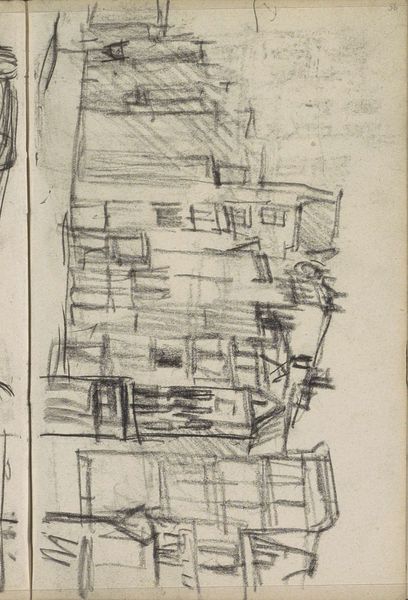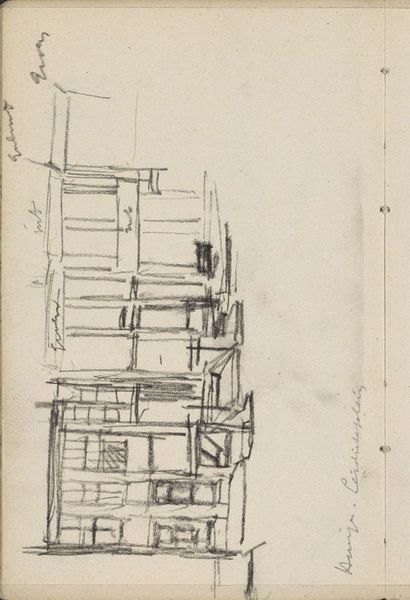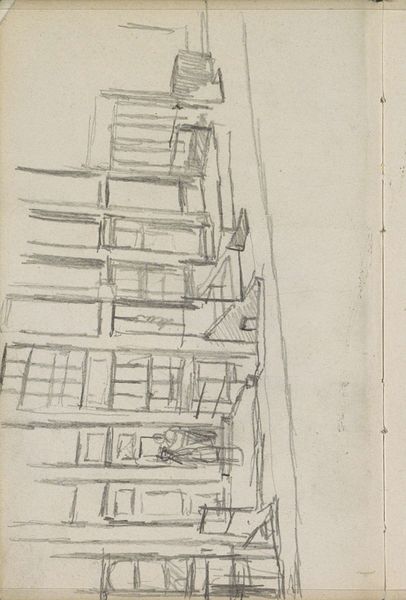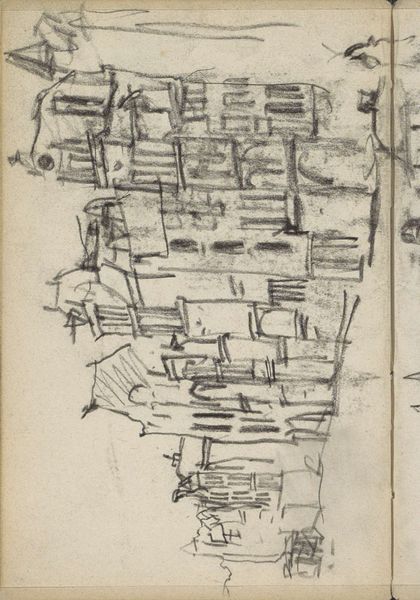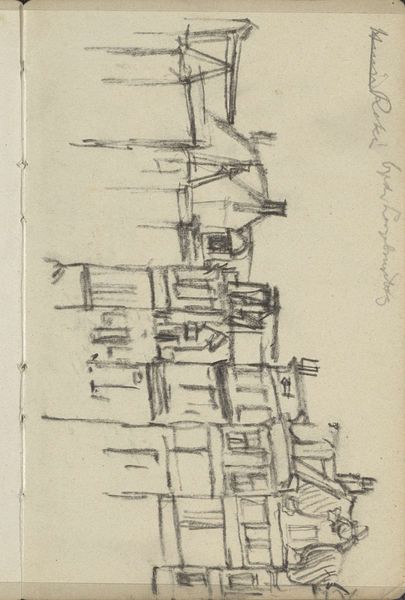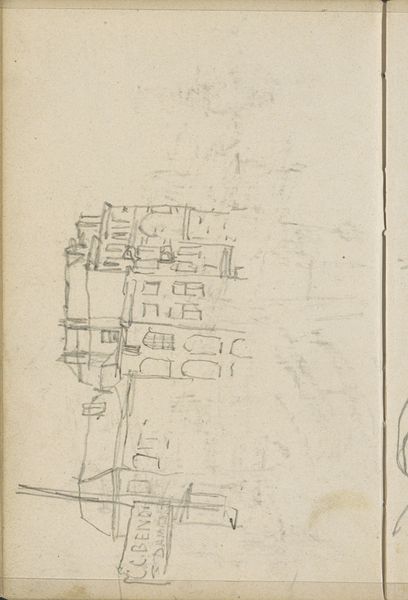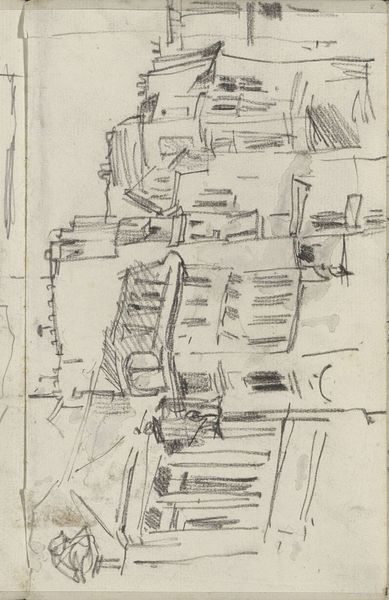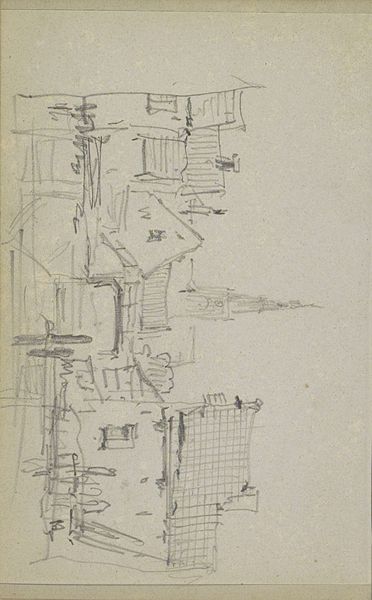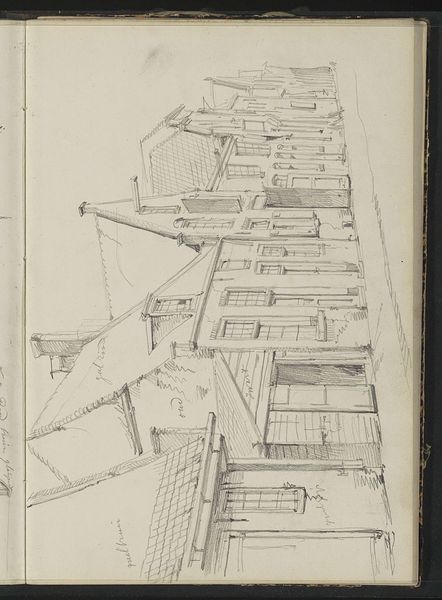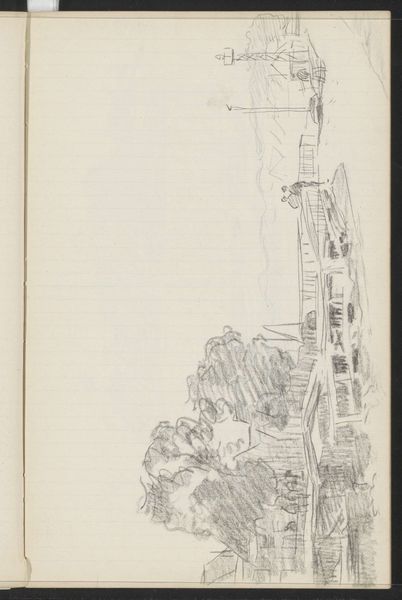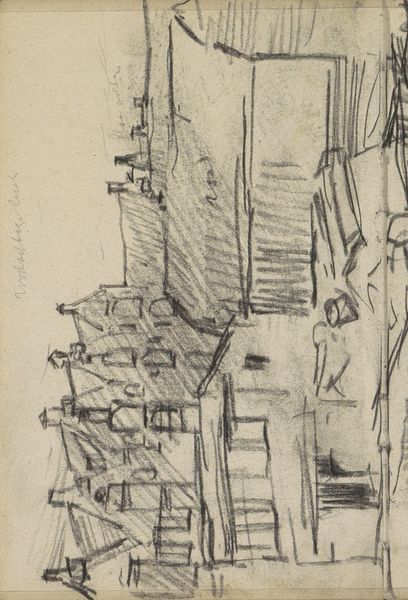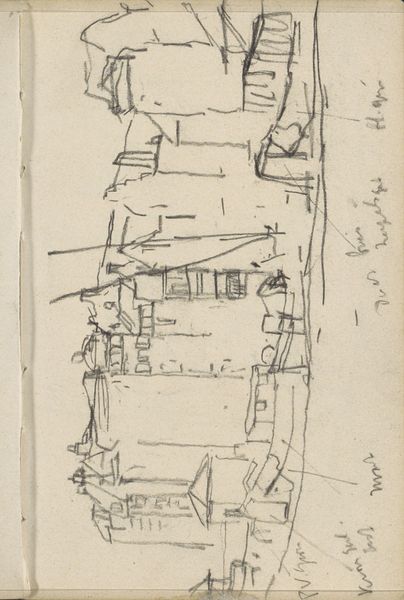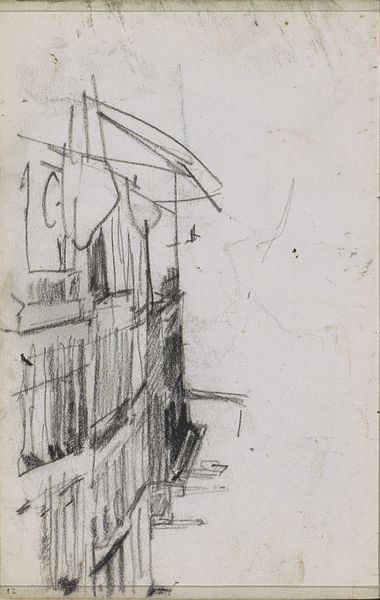
Copyright: Rijks Museum: Open Domain
Curator: This drawing, "Gezicht op gebouwen aan een gracht in Amsterdam," was created by George Hendrik Breitner around 1896-1897. It resides here at the Rijksmuseum. Editor: My immediate impression is that it feels like a snatched moment, capturing the essence of the city rather than a perfectly rendered view. There's an immediacy and authenticity I really respond to. Curator: Indeed. The looseness of the lines, the quickness of the sketch, reflects Breitner's approach to capturing urban life. What about the material itself? We're seeing pencil and likely pen and ink on what seems to be lined notebook paper. It is important to remember that urban landscapes by Dutch painters at this time also document the labor surrounding the canal buildings. Editor: The use of a humble sketchbook actually democratizes the subject, doesn't it? It’s not some grand commission; it's a personal observation, potentially on-the-go. He isn't glorifying the powerful with portraiture. I am reminded, too, that the date it was created falls within the time period of the rise of Amsterdam and increased trade of that period, making this a subtle, yet potent recording. Curator: I agree. Think about where this sketchbook might have been produced. Was it local? Was it imported? And who produced the paper, the pencils, and the ink? What are the environmental consequences? These questions connect the work back to a larger sphere of production, which brings out the value of labor within that society. Editor: Exactly. And seeing the lined paper peeking through adds to that feeling of it being unfiltered, a real slice of life. Considering the social and historical contexts of Breitner's Amsterdam, you’re spot on about its documentary value. It is not just picturesque; it's a visual record of urban development. Curator: What's particularly compelling is the way it reflects the rapidly changing urban landscape of the late 19th century and highlights an engagement with process. He's not just depicting buildings, but his very act of sketching becomes a part of that dynamic urban experience, an artistic labor in its own right. Editor: Yes, and the perspective is fascinating too. Slightly off-kilter, capturing a vertical emphasis of architectural presence in the ever-shifting and growing capital, a stark reflection. All together it feels vital and engaging even after all these years. Curator: A testament to how artistic practices embedded in socio-economic conditions endure to reveal broader implications and our continuous engagements with materials in a public space. Editor: Agreed, and how this little drawing manages to encapsulate such layered narratives with incredible economy.
Comments
No comments
Be the first to comment and join the conversation on the ultimate creative platform.
